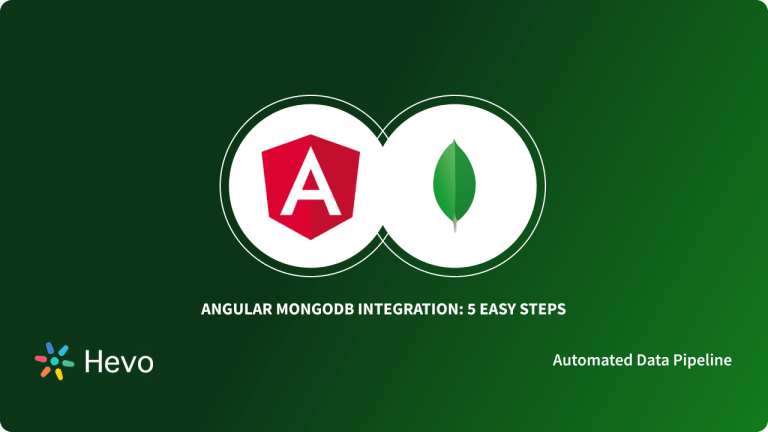Even though the stack field is getting crowded, there are several options, from LAMP to Ruby on Rails. There’s no one-size-fits-all stack that works for every project. Each stack has its benefits and downsides and is specifically geared for different projects.
This tutorial talks about all the fundamental aspects of MEAN.JS, including its architecture & components- MongoDB, Express.js, Node.js, and Angular.js. Discover why this end-to-end MEAN stack is acquiring an excellent name for modern web app development.
Table of Contents
Prerequisites
A basic understanding of all four technologies—MongoDB, Express.js, Angular.js, and Node. js—and web programming using HTML, CSS, and JavaScript is desirable.
What is MEAN Stack?
Mean.js is a group of technologies that can create dynamic websites and web applications. Mean.js is used to create web applications where MongoDB is utilized as the database system, Express.js as the back-end web framework, node.js as the web server, and Angular.js as the front-end framework.
For beginners or professional developers, learning MEAN is paramount as it has become an integral tool for building web applications.
Hevo Data, a No-code Data Pipeline, helps integrate data from various databases with 150+ other sources and load it in a data warehouse of your choice. Check out what makes Hevo amazing:
- Easy Integration: Connect and migrate data without any coding.
- Auto-Schema Mapping: Automatically map schemas to ensure smooth data transfer.
- In-Built Transformations: Transform your data on the fly with Hevo’s powerful transformation capabilities.
Components of MEAN.JS Stack
MongoDB
MongoDB is an open-source NoSQL database that stores data in JSON format. This represents the letter M in the acronym MEAN.JS. Instead of employing tables and rows like relational databases, the data is stored using the document-oriented data model. To simplify data transmission between client and server, it saves data in binary JSON (JavaScript Serialized Object Notation) format. MongoDB uses the collection and document concepts.
Express.js
Express.js is an adaptable Node.js web application framework that streamlines the development process. The letter E represents it in the MEAN.JS acronym. It allows the building of secure, modular, and fast applications because of its simple configuration and customization. It specifies an application’s routes based on HTTP methods and URLs.
Angular.js
A stands for AngularJS, a web frontend JavaScript framework, in the term MEAN.JS. It enables the clean Model View Controller (MVC) construction of dynamic, single-page applications. AngularJS automatically handles each browser-specific JavaScript code.
Node.js
Node.js is a server-side platform for creating online applications like single-page websites and other web apps. It is represented by the letter N in the acronym MEAN.JS. It offers a robust library of different JavaScript modules, significantly streamlining the creation of web applications using Node.js. It is based on the V8 JavaScript engine from Google Chrome, which executes code quickly.
Architecture of MEAN.JS Stack

- The client-side language used to process a client’s request is AngularJS, as seen in the image above.
- AngularJS processes user requests as soon as they come in.
- The request then moves on to the second level, where Express.js serves as the backend web framework and Node.js acts as the server-side language.
- Node.js handle client/server queries, and database requests are made via Express.js.
- The data is retrieved and sent to Express.js by MongoDB (database) in the final step.
- Node.js and Angular.js get the response from Express.js, which is shown to the user.
Key Features of MEAN.JS Stack
These are the following features of MEAN stack architecture:
- It enables the developer to generate the entire code from the client to the server in JavaScript.
- MEAN stack architecture supports the MVC, i.e., Model View Controller architecture.
- The MEAN stack components are free and open-source to use.
- Offers flexibility and ease of use.
- It deploys a massive module library of node.js.
- It utilizes JSON for data transferring.
Why Choose the MEAN.JS Stack?
- To be able to design scalable applications that are ready for cloud deployment.
- Enables the utilization of a single language throughout the entire program that facilitates development.
- A built-in web server that will streamline the deployment.
- To utilize the versatility of MongoDB to handle massive amounts of data.
- A consistent, standardized software stack is vital in creating an application from scratch.
- Utilizing tools made to operate together when building your backend speeds up resource management and cuts down on development time.
Use cases of MEAN.JS Stack
The MEAN stack excels in many applications. Many modern businesses, including Uber, PayPal, Netflix, and others, have primarily used the MEAN stack to create their websites and web applications to its performance advantages. The MEAN stack is also used in developing the websites Ulbora and Trakit.me.
Because of its scalability and capacity for handling several concurrent users, it’s a good option for creating cloud-native apps. For creating single-page applications (SPAs) that provide all information and functionality on a single page, the AngularJS frontend framework is the best choice. Here are some instances of MEAN in action:
- Calendars
- Mapping and location finding
- Enterprise apps
- Web apps for big data
- Streaming apps
- News aggregation sites
- Expense tracking applications
Note: You can view a few live MEAN stack-built application examples.
Advantages of MEAN.JS Stack
- Decreased costs and time for development
- MVP creation that is quick and scalable
- Increased adaptability and productivity of developers
- Outstanding performance
- Quick data retrieval and storage
- Programming language uniformity: Mean Stack makes it simple to move code from one framework to another.
- OS compatibility
- Apps’ speed and quality
- The MEAN stack supports the MVC architecture.
- Open source
Limitations of MEAN.JS Stack
- Integrating the MEAN stack into existing architectures is challenging because some outdated applications may not support JavaScript.
- Inefficient for larger applications when workflows are busy, and there occurs a risk of data loss.
- As each technology updates and undergo modifications, maintenance can be a problem.
Conclusion
Selecting the best tech stack for your project is a significant decision. With the knowledge you gained today, you’ll be able to decide what MEAN stack offers best for your team and business. This article has covered all the fundamentals of MEAN.JS, including the benefits & the limitations it has. The next stage is to educate yourself on web architectures so that you know all the possibilities for your next project.
If you’re looking for a reliable solution to integrate and manage data across your web applications seamlessly, Hevo provides a no-code platform that supports real-time data pipelines and makes data flow effortless for your MEAN-based projects.
Sign Up for a 14-day free trial and experience the feature-rich Hevo suite first hand.
Share your experience understanding the MEAN js STACK in the comment section below! We would love to hear your thoughts.
FAQs
1. How Secure is the MEAN.JS Stack?
The business logic and database layer are not accessible to end users if the MEAN stack is deployed with the appropriate network isolation. As a result, the program, by default, is created to prevent malicious user interaction(Query injection, code manipulation, port spoofing, etc.).
2. Is the MEAN stack easy to learn?
Yes, potentially. The MEAN stack is founded on simple JavaScript programming and is a natural database for JSON structures like MongoDB, making this solution simple to modify and keep up-to-date.
3. Is MEAN a full-stack solution?
Yes. The display tier (Angular.js), application tier (Express.js and Node.js), and database tier(MongoDB) of MEAN all adhere to the conventional three-tier stack design.





